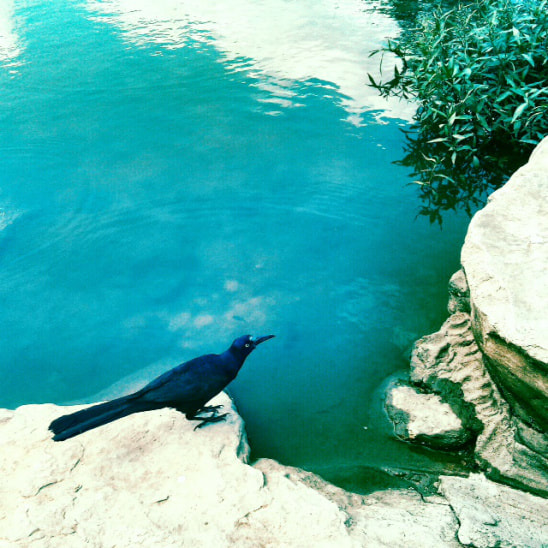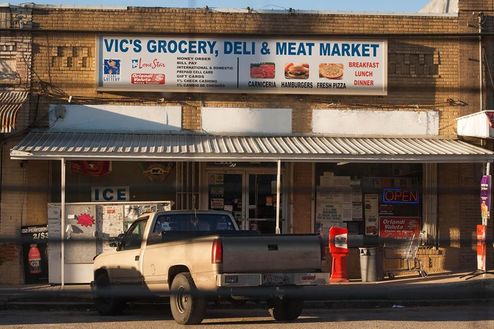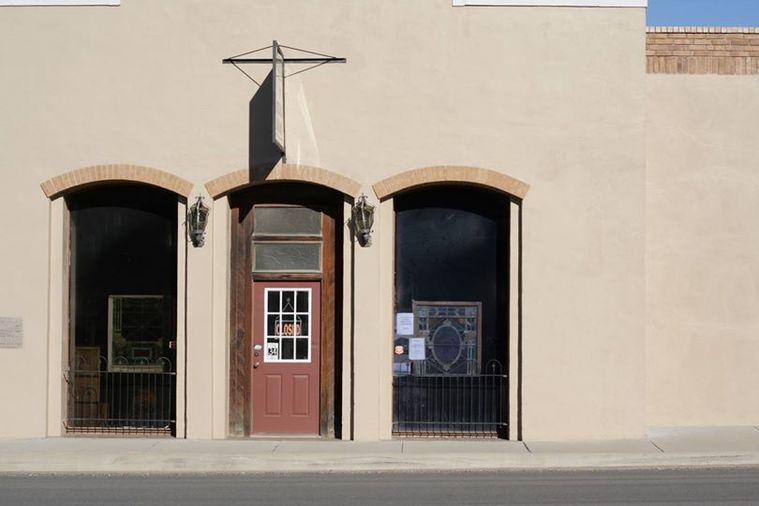Texas
Ever since I first came to Texas in 2011, I have been fascinated with the colors and the textures of this land, its dust, its light, its landscapes, and space--and, of course, with its people. My acquaintance with America, in all its endless variegated beauty, has begun with and will always be tinged by my immersement in Texas. Not only did Texas become a hospitable home, even if temporary, for me and my family in my travels, but it mesmerized me forever with its fantastic abundance.
To Texas, I own my first ethnographic writings published. Incidentally, they were works of visual anthropology, even though at the time I did not call them that.
To Texas, I own my first ethnographic writings published. Incidentally, they were works of visual anthropology, even though at the time I did not call them that.

Grackles and Old Cars
Grackles are sleek birds that wear the expression of rapacious fishes. Many years of cohabitation with humans has not loosened the danger on which they seem to insist. Perhaps it is their fast thin legs and tiny black beaks that give this impression. Sometimes they look at you as if to say “Pardon?” with stooped shoulders glistening in the sun, plumes blue, violet, and iridescent. They move quickly, look sharply. They convey a sense of their proneness to easy and groundless irritation in the way they walk, like miniature caricatures of the Tyrannosaurus Rex, like a child’s plastic model of once dangerous carnivores.
Grackles are sleek birds that wear the expression of rapacious fishes. Many years of cohabitation with humans has not loosened the danger on which they seem to insist. Perhaps it is their fast thin legs and tiny black beaks that give this impression. Sometimes they look at you as if to say “Pardon?” with stooped shoulders glistening in the sun, plumes blue, violet, and iridescent. They move quickly, look sharply. They convey a sense of their proneness to easy and groundless irritation in the way they walk, like miniature caricatures of the Tyrannosaurus Rex, like a child’s plastic model of once dangerous carnivores.
Austin is full of old cars; charming rusty jalopies, four-wheeled embodiments of sentimentality. They inflict a pleasant pang of nostalgia even if you, like me, are from a place that has nothing to do with the American brand of fleeting monumentality. The little commemorations to themselves, the rusty Cadillacs, Fords, Oldsmobiles, Chevrolets, Buicks, and other breeds, are scattered around Austin and its outskirts, some of them enmeshed in rustication, stopped for good, lying low in the grass; others are still moving to and fro, glistening with rear mirrors and chromed bumpers and handles, honking, revving their engines, roaring and flaring, navigating space and time.
Source: The End of Austin 22 May 2014
Check out my another Austin-related publication in The End of Austin: Austin Old-Timer and Newcomer 24 May 2016
The End of Austin is a wonderful project invented by the Professor of the American studies Randy Lewis. The paradoxical nature of this project is evident to everyone who is familiar with the Austin-themed buzz of the last years while Austin has been undergoing a rapid gentrification. While there is so much conversation around Austin growing and exploding into another overly-busy American city, there has been a growing anxiety related to the city dwellers' attempts to save the "keep-Austin-weird" direction that they so love. Yet the fast development does not help disenfranchised groups of the city dwellers to acquire more certainty in what has been a precarious existence--if anything, the development exacerbates the situation of many. "The end of Austin" as a key to thinking through these processes drives us to imagine the remote future when Austin comes to the finite days of its glory--and hopefully the end of the Austin that we imagine now will be the beginning of the Austin we don't yet know.
The End of Austin is a wonderful project invented by the Professor of the American studies Randy Lewis. The paradoxical nature of this project is evident to everyone who is familiar with the Austin-themed buzz of the last years while Austin has been undergoing a rapid gentrification. While there is so much conversation around Austin growing and exploding into another overly-busy American city, there has been a growing anxiety related to the city dwellers' attempts to save the "keep-Austin-weird" direction that they so love. Yet the fast development does not help disenfranchised groups of the city dwellers to acquire more certainty in what has been a precarious existence--if anything, the development exacerbates the situation of many. "The end of Austin" as a key to thinking through these processes drives us to imagine the remote future when Austin comes to the finite days of its glory--and hopefully the end of the Austin that we imagine now will be the beginning of the Austin we don't yet know.
In this essay (button above), the sensitivities of Texas landscape are explored by a flâneur, that is to say, a flâneur in a car, a driver, for a stroller on foot is a pitiful sighting in the realm of Texas distances. The mind of a flâneur is occupied with seemingly unrelated matters, which coalesce into visceral exploration of the affect that a place generates. What does it mean to be in Texas? Does it mean to be amidst a vast void heavily populated with post-stereotypical images of a Republican state? Texas numerous loci are similar and yet very different. The urban geography—Luling, Johnson City, Kyle, Giddgings, Seguin, Harwood, Gonzales, Dallas, Gruene, and Austin—corresponds with the cultural delineation: outlaws and robbers, railroads and water towers, Seguin and Austin, cemeteries and memorials; family stories and the history of the country. The space is haunted by the competing visions of the past and the future. Key words: Texas, Texas landscape, affect, poetics, small American towns, phenomenology of place and space.
A Confederacy-driven nostalgic aesthetics has flourished with the Trump's election. In months, noticeable changes happened in Texas. I certainly observed the kernels of these changes before. Now, Democratic candidates' posters all but disappeared from stands. Confederate flags, previously appearing here and there as soon as one drove outside of Austin, became more noticeable. The day-to-day interactions have also changed, almost imperceptibly.
Thus, as I tinkered with rocks in one small store of semi-precious stones, an owner of the store asked me how long I lived in Texas, and hearing that it's been years, remarked: "Good. We do not need any more people coming here."
"You mean, immigrants?" I asked.
He emitted a confused laugh and said:
"No, I didn't mean that!"
I was also slightly abashed that I offered such a straightforward question. As my accent must have attested beyond doubt, I wasn't an American. Neither was I an immigrant, but how would he know? The owner of the shop reiterated that he rather meant people, people, in general, coming to the blessed land of Texas--it was a "good-natured" refusal of seeing more strangers around the places dear and familiar, which perhaps didn't make his remark any more innocuous after all.
Thus, as I tinkered with rocks in one small store of semi-precious stones, an owner of the store asked me how long I lived in Texas, and hearing that it's been years, remarked: "Good. We do not need any more people coming here."
"You mean, immigrants?" I asked.
He emitted a confused laugh and said:
"No, I didn't mean that!"
I was also slightly abashed that I offered such a straightforward question. As my accent must have attested beyond doubt, I wasn't an American. Neither was I an immigrant, but how would he know? The owner of the shop reiterated that he rather meant people, people, in general, coming to the blessed land of Texas--it was a "good-natured" refusal of seeing more strangers around the places dear and familiar, which perhaps didn't make his remark any more innocuous after all.
This animation is created in 2016. I titled it The Little House of a Confederate


